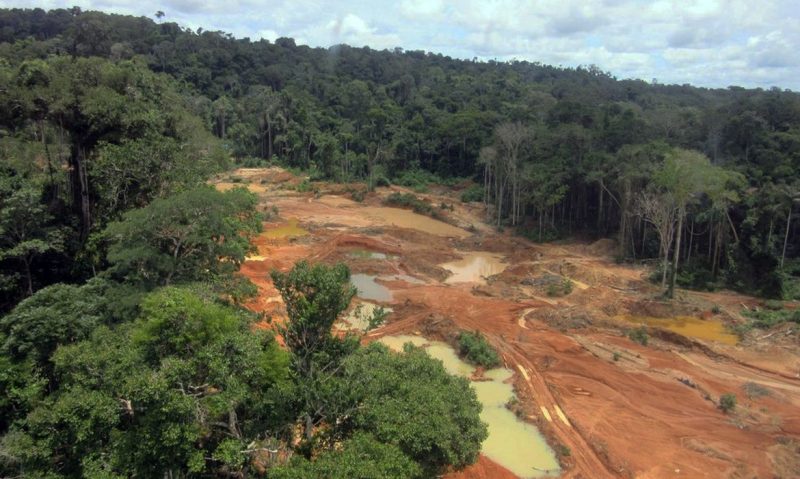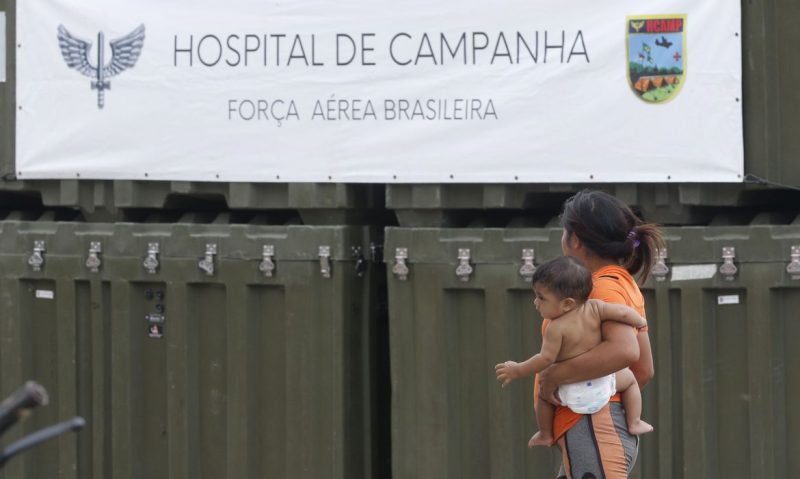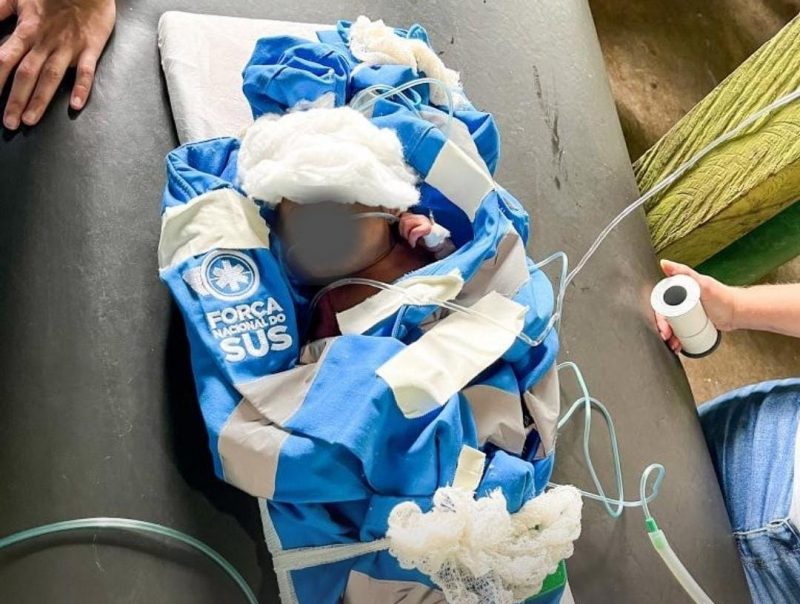
Malaria, a disease caused by a parasite that infects a mosquito and through its bite to humans, continues to grow in Yanomami territory. There are so many cases that out of 123,151 cases of malaria reported in Brazil last year, 11,530 were among indigenous people.
The disease is considered tropical and is associated with sanitary conditions and the history of contact of this indigenous population with people not belonging to their tribes.
The parasite is so aggressive that it settles in the liver of the human body and multiplies there and begins to infect the erythrocytes that make up the human blood. Red blood cells are responsible for transporting oxygen from the lungs to the tissues and removing carbon dioxide that is excreted by the lungs.
 Malaria is present in illegal mining sites on Yanomami First Nations land – Photo: Disclosure/Federal Police/North Dakota
Malaria is present in illegal mining sites on Yanomami First Nations land – Photo: Disclosure/Federal Police/North DakotaHowever, it is not only the indigenous people who suffer. Illegal miners present in the region will also suffer. To give you an idea, researchers from UFMG (Federal University of Minas Gerais) identified factors last year that can increase the risk of malaria among gold miners. The area under assessment has the highest rates of malaria in Brazil since the late 1980s, the researchers said.
Illegal mining on indigenous lands in the legal Amazon has increased by 1217% over the past 35 years. From 1985 to 2020, the area affected by mining activities increased from 7.45 square kilometers (km²) to 102.16 km².
According to a study by scientists from INPE (National Institute for Space Research) and the University of South Alabama in the US, the number is frightening. They show that almost all illegal mining (95%) takes place on only three indigenous lands: Kayapo, Munduruku and Yanomami. The results of the work are published in the journal Remote Sensing.
What relationships?
Indigenous doctor Enrique Passos explains the link between mining and malaria. For him, mining is directly related to an increase in the incidence.
“Deforestation and mining are linked to malaria and increase the number of Anopheles mosquitoes. Therefore, they contribute to an increase in the number of cases of this disease,” he says.
According to the InfoAmazonia website, the deforestation caused by mining and the accumulation of waste left by the activities are changing the ecosystem of the regions, contributing to an increase in the number of mosquitoes. In addition, the prospectors themselves eventually become infected, which contributes to the growth and spread of the disease. The information is confirmed by Enrique Passos.
“Studies also show that deforestation reduces mosquito biodiversity and increases the population of Anopheles mosquitoes, which carry malaria. This is because mining causes changes in the environment that create an environment conducive to more active breeding of malaria-carrying mosquitoes,” he explains.
Disease risks
Passos explains that the risks of an increase in this disease on the lands of the Yanomami indigenous peoples are varied.
“This will mean an increase in infant, maternal and infant and overall morbidity and mortality. It also brings cases of severe malaria with complications. In addition to disrupting social and industrial order by the Yanomami,” he says.
Between 2014 and 2020, the number of cases of Falciparum malaria among the indigenous Yanomami increased by 716 times.
The field hospital “hammers” cases
The field hospital set up by the FAB (Brazilian Air Force) in Boa Vista to house the Yanomami indigenous people has treated more than 300 people since last week, “most of them children.” The balance sheet was submitted this Wednesday (1st) by Major Vandestin, the division commander.
“There are many cases of pneumonia, intestinal parasitosis, malaria and many skin diseases,” the major said.
 The field hospital has already provided more than 300 consultations – Photo: Fernando Fração – Agência Brasil/Disclosure/ND
The field hospital has already provided more than 300 consultations – Photo: Fernando Fração – Agência Brasil/Disclosure/NDAccording to Agência Brasil, the most serious cases among children are referred to the hospital da Criança Santo Antônio in Boa Vista, run by the city hall of the capital Roraima. According to the latest balance, 55 representatives of the indigenous peoples were interned in the detachment. Of these, 45 are Yanomami children and seven are in intensive care.
neglect
For the doctor, the problem began with what he calls the “negligence and incompetence” of the government, which has worsened over the past four years. This was mainly due to a lack of investment in healthcare.
 Pictured is a malnourished Yanomami child being helped by SUS – Photo: Reproduction/@hekurari08/ND
Pictured is a malnourished Yanomami child being helped by SUS – Photo: Reproduction/@hekurari08/NDThe specialist believes that in order to solve the problem, a state policy of supervision and territorial inspection is necessary, connected with public health policy within the framework of a differentiated health care model. In it, professionals would take into account, in addition to health, also the culture of this population.
Professionals also need training. This is because this population has different subjects, experiences and problems.
“We must understand that this is a historical process of colonization that continues to this day, and that adequate and sufficient state policies have not been implemented for years,” he concludes.
Source: Ndmais